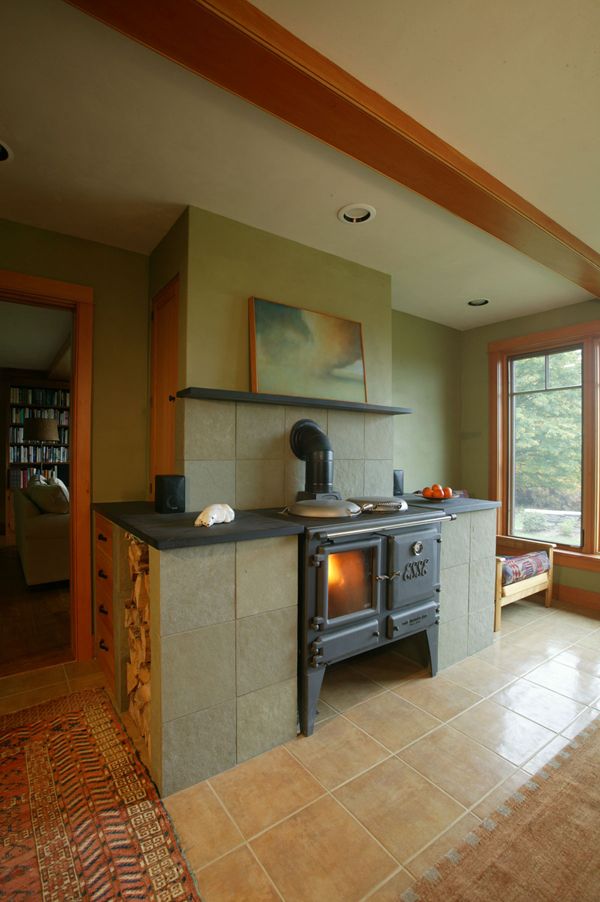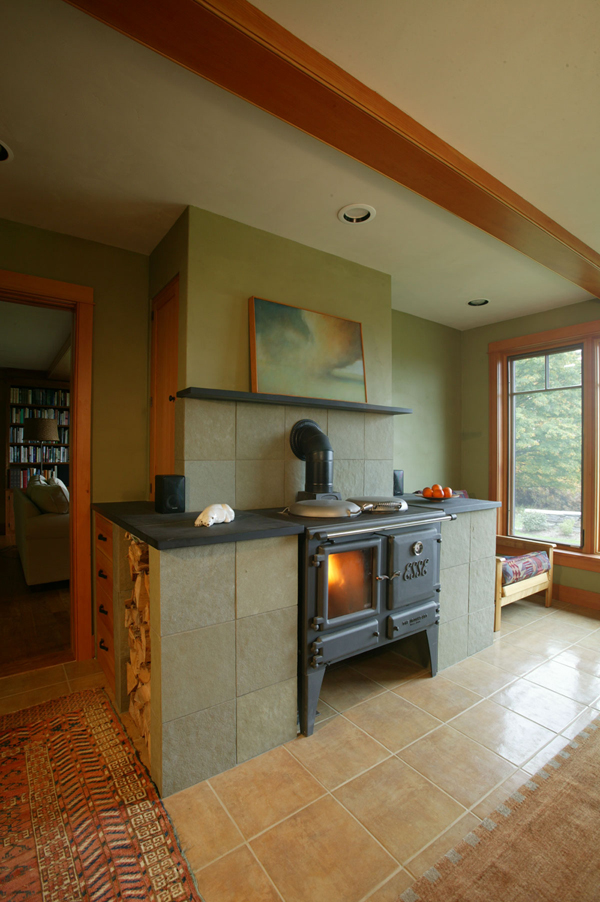
David Meiland has been browsing for a new woodstove, and in the process learned that outside air for combustion is typically provided in one of two ways: either through a duct that dumps air somewhere near the stove, called ‘proximity air,’ or through a duct that’s connected directly to the stove.
In the age of leaky old houses, this wasn’t a concern. Combustion air could be replaced through the many air leaks in exterior walls. But as new houses becoming increasingly airtight, replacement air for the stove looms larger.
So, Meiland asks in a Q&A post at GreenBuildingAdvisor, which way is better?
Meiland senses that proximity air is a fancy word for leak, while a direct connection makes “perfect sense.” Air needed for combustion would only be brought into the house when it was actually required, logically a better solution than opening a free air passage to the outside.
But direct-connect systems also have a potential weakness, and a Scandinavian stove manufacturer seems to suggest no makeup air has to be provided in the first place.
The conversation is the topic of this week’s Q&A Spotlight.
Read the whole article at GreenBuildingAdvisor.com.
Fine Homebuilding Recommended Products
Fine Homebuilding receives a commission for items purchased through links on this site, including Amazon Associates and other affiliate advertising programs.

Reliable Crimp Connectors

Handy Heat Gun

Affordable IR Camera



























